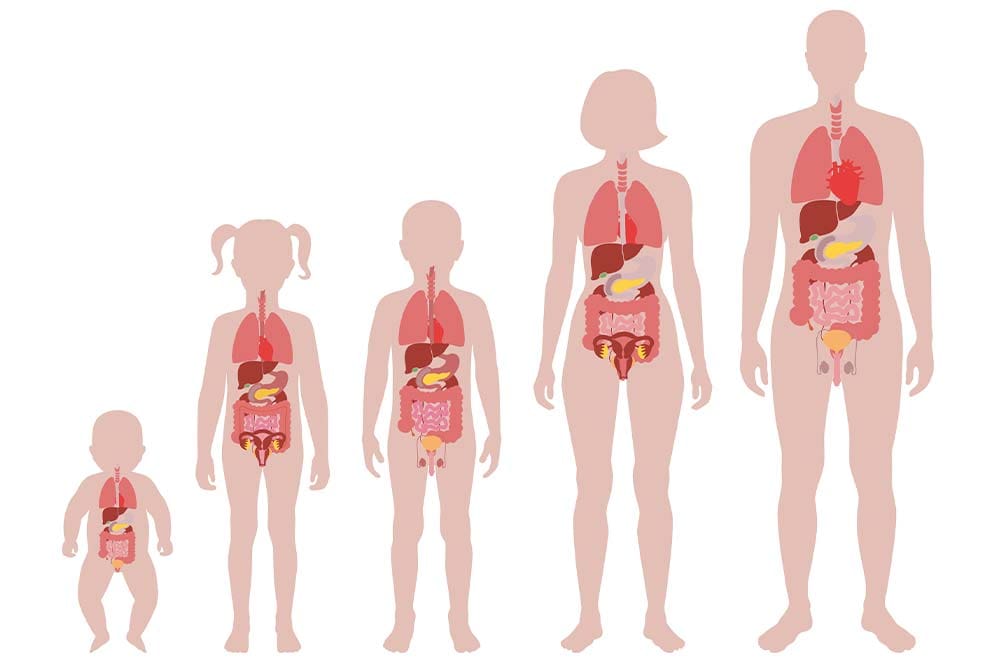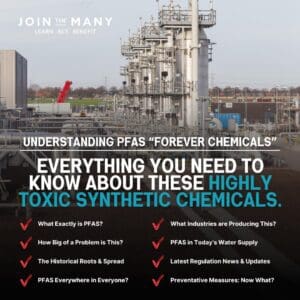History of PFAS

PFAS or Per- and Polyfluoroalkyl Substances are a class of fully fluorinated compounds with chains of eight carbons. These artificial chemicals have a unique ability to repel stains, oil, and water.
The first and most popular PFAS is Teflon, manufactured in the 1940s by DuPont. There are two primary subgroups of PFAS, namely:
- Polyfluoralkyl substances
- Perfluoroalkyl substances
The numerous PFOS and PFOA developed over time were ideal for use in various products, including:
- Leather products
- Nonstick coating for cooking wear
- Industrial surfactants and firefighting foam
- Waterproof clothing
- Paint, sealants, and varnish
- Surface protection products like clothing and carpet cleaning treatments
- Processing aids
- Emulsifiers
- Plumbing thread seal tape
- Electrical wire casing
- Wetting agents
- Cardboard packaging
- Coatings for paper
- Food containers with grease-resistant paper, like pizza boxes and microwave popcorn bags
- Some cleaning products and waxes
Some cosmetic manufacturers intentionally add certain PFAS in various cosmetic products. The PFAS enhances product texture and consistency and adds a waterproof quality. They also make these products applied on the skin appear smooth and shiny.
You’ll find PFAS in:
- Waterproof mascara
- Eyeshadow and eyeliner
- Lipstick
- Lotions
- Foundation
- Cleansers
- Shaving cream
- Nail polish
Numerous health studies show that PFAS can cause various illnesses, such as congenital disabilities and cancers. They don’t break down in our bodies or the environment hence the name “forever chemicals.”
Names

In the United States, the eight major manufacturers of PFAS are:
- 3M Company/Dyneon
- Dupont/Chemours
- Ciba/BASF
- Daikin
- Akrema
- Solvay Solexis Inc.
- Clariant
- Asahi
The eight companies manufacture Perfluorooctanoic acid (PFOA), but the only PFOS producer in the US is 3M.
Overview of PFAS Research Findings

Research and studies show that PFAS accumulate in drinking water, air, soil, and the plants and animals we eat. Prolonged exposure causes bioaccumulation, where the PFAs remain in various body organs for years.
In general, no level of PFAS chemical contamination in groundwater is acceptable. However, the EPA recognizes these substances and provides guidelines on permissible levels.
In 2009, the EPA provided provisional health advisories and guidance on PFAS toxicity values. However, in 2016, they issued lower guidelines stating that PFOA and PFOS levels should not exceed 70 parts per trillion.
The new guidelines followed an assessment of peer-reviewed science on PFAS chemical contamination.
The International Agency for Research on Cancer (IARC) and the National Toxicology Program of the United States Department of Health and Human Services (NTP) released these assessments.
According to the NTP, both PFOS and PFOA are immune hazards. The basis of this conclusion was the consistent results of adverse immune effects in humans. The IARC found evidence that shows PFOA has carcinogenic properties in people and animals.
The EPA wants to ensure that agencies can make the necessary moves to protect local communities.
The studies show that PFOS and PFOA exposure above certain levels can cause adverse health effects.
This high-level exposure occurs through ways such as:
- Consuming meat from animals like fish and plants with accumulated PFAS
- Eating food in contact with PFAS-containing packaging like some microwaveable popcorn bags.
- Drinking PFAS-contaminated water
- Workplaces that use or produce PFAS, like electronics manufacturing, or chromium electroplating
- Exposure to household products with PFAS, like water- and stain repellent footwear, clothes, and carpets
- Early childhood exposure via breastmilk and in utero fetal exposure from PFA-exposed mothers
Areas Where Groundwater Has PFAS Contamination
According to research, there are more than 2800 sites with PFAS contamination in the soils, surface water, and groundwater.
Primary sources are where PFAS manufacture takes place, airports, and military bases, for example:
- DuPont/Chemours company facilities in Parkersburg, Washington
- 3M Corporation’s factory in Cottage Grove, Minnesota, and the associated dumpsites
- Numerous military installations across the United States
Firefighter and Military PFAS Exposure
Firefighters use a firefighting foam known as Aqueous Film Forming Foam (AFFF).
After use, the foam residue seeps into the ground, contaminating nearby soil and water. Firefighting gear also contains PFAS treatments to make it more resistant to petroleum and water.
Recalls

No particular laws in the US require manufacturers to inform consumers that a product contains PFAS.
Due to pressure from the public, several apparel brands are moving to remove PFAS. For instance, LL Bean and American Eagle eliminated PFAS from all merchandise. Other popular brands like Patagonia Inc. and Ralph Lauren promised to do the same within particular durations.
There are already active lawsuits in the cosmetic industry against companies such as CoverGirl, Burt’s Bees, Shiseido, and L’Oreal. Hundreds of personal care and cosmetic products may have dangerous PFAS levels, unbeknownst to consumers.
The US Food & Drug Administration (FDA) raised concerns about PFAS exposure through the foods we consume. According to tests, shellfish and fish contain the highest levels, while eggs, honey, vegetables, and tap water have lower levels.
In January 2022, tests showed beef from Grostic Cattle Company in Michigan had PFAS contamination. The State of Michigan initiated efforts to prevent the sale of contaminated meat and issued consumer alerts.
Physician Sentiment

Professor Elsie Sunderland, an associate professor at Harvard T.H. Chan School of Public Health, cautions about PFAS. Scientists are now starting to understand the effects of thousands of PFASs.
Since PFAS don’t break down in the body, they settle in the liver, kidneys, and blood. Various health conditions associated with prolonged exposure to PFAS include:
- Liver damage
- Increased cholesterol levels
- Autoimmune diseases
- Pre-eclampsia
- Higher risk of certain cancers, like testicular, pancreatic, kidney, and liver cancer
- Higher risk of breast cancer in women
- Infertility or decreased fertility
- Congenital disabilities in children from families exposed to PFAS
- Low birth weight
- Behavioral effects and diminished growth in older children and infants
- Developmental issues in children include accelerated puberty and loss of bone density
- Digestive disorders
- Resistance to childhood vaccines
- Endocrine disruption
- Thyroid disease
- Ulcerative colitis
According to the Environment Working Group, exposure to PFAS affects young girls even at low levels. It causes the structure of the mammary glands to change, increasing the risk of breast cancer.
PFAS exposure suppresses the immune system and disrupts hormones, which also increases the risk of breast cancer.
History of Lawsuit

1999
In 1999, Wilbur Tennant, a West Virginia farmer, submitted the first lawsuit against DuPont. He alleged that DuPont contaminated water with PFOA. It caused his cattle to develop various health issues such as tumors, congenital disabilities, stillborns, and black teeth.
In the ’90s, DuPont tested the water and discovered high PFOA levels. However, they failed to disclose these details to Tennant but blamed him for poor animal husbandry.
2001
When DuPont finally settled the case, Tennant’s attorney, Robert Bilott, discovered the enormous public health threat. He wrote the EPA, various federal agencies, and the US Attorney General letters in March 2001.
He elaborated on the case findings, warned of the possible public health emergency, and urged the regulators to take swift action.
In summer 2001, Bilott and his team filed a class-action lawsuit on behalf of thousands of residents. The participants were people whose drinking water had PFOA contamination from DuPont’s West Virginia Teflon plant.
2002
In 2002, the EPA prioritized a review of C8 and hinted at a potential ban based on the findings. One year later, the EPA under TSCA issued the first risk assessment draft. It noted concerns about the widespread PFOA contamination across the country.
2004
In 2004, the EPA filed a lawsuit against DuPont for withholding information about the significant risk of exposure. The case relied on findings from DuPont’s scientists about PFOA levels in the local drinking water and toxicity to human health. The lawsuit concluded in 2005 with a $16 million settlement.
2007
In 2007, 3M incurred a penalty of $1.5 million for withholding particular PFAS data from the EPA. DuPont also agreed to settle a class action with more than $300 million in settlement benefits. This included about $235 million for medical monitoring of the nearly 70,000 class members. DuPont also paid for filtration systems in the six public water supplies and multiple private wells in Ohio and West Virginia.
DuPont also promised to phase out PFOA use and manufacture across the country by 2015. They instead created replacement chemicals with different carbons such as Gen X and a C6.
Part of the settlement required the formation of the C8 Science Panel, consisting of three independent epidemiologists.
The duty of the C8 panel was to find possible connections between PFOA exposure to the diseases of the class members and drinking water.
In 2006, the panel collected, tested, and studied data and blood samples from the participating class members.
2009
In 2009, agricultural sludge contamination in Alabama caused the EPA to issue the first short-term nationwide Provisional Health Advisory. The Maximum Contaminant Level (MCL) in drinking water was 0.4ppb (400ppt).
2012
In 2012, the C8 science panel completed its research, finding possible links between PFOA exposures via drinking water to:
- Pre-eclampsia
- Ulcerative colitis
- High cholesterol
- Testicular cancer
- Thyroid disease
- Kidney cancer
2013
By 2013, there were about 3500 personal injury lawsuits against DuPont for these six diseases. The court consolidated these cases or the bellwether trials into multidistrict litigation (MDL). MDLs make coordinating pretrial motions and discovery more manageable, saving time and money.
DuPont lost the trials and settled the cases at about $671 million in 2017.
2016
In 2016, the EPA issued the first long-term Provisional Health Advisory for PFOS and PFOA at 70 ppt (0.07 ppb). However, National Resource Defense Council and the Environmental Working Group advised this level was too high and recommended 2ppt or 1ppt.
This health advisory sparked testing across the country. Most states, such as Massachusetts, Ohio, New Jersey, and Michigan, found these chemicals sometimes higher than the EPA guideline.
2018
In 2018, New Jersey was the first to set the MCL for PFOS at 13 ppt (0.013 ppb) and PFOA at 14 ppt (0.014 ppb). Other states later set individual MCLs, significantly lower than the EPA 70 ppt guideline.
There were also numerous lawsuits against various AFFF manufacturers claiming PFOA contamination in soil and groundwater.
2019
In 2019, the court consolidated these cases by property owners, water providers, and personal injury attorneys into multidistrict litigation (MDL-2873).
The first batch of cases by water providers will proceed to trial in 2023 before the AFFF MDL court in the US District Court of South Carolina.
2021 to Date
Since 2005, federal courts have received more than 6,400 PFAS-related lawsuits. In 2021, DuPont faced more than 6,000 lawsuits individually, while 3M received about three cases daily. Some cases ended in large settlements, such as the State of Minnesota’s most famous cases against 3M Corporation.
The Minnesota Attorney General sued 3M for $850 million compensation to cover damages to natural resources and fund various water projects. Large chemical manufacturers are not the only ones under fire. The Japanese cosmetic company Shiseido and Thinx, producing menstrual period underwear, was among the first to get sued last year.
During the past few months, there have been more lawsuits against:
- Manufacturers of PFAS-containing cosmetics
- Restaurants that packaged food with PFAS-containing materials
- Retailers of PFAS-containing clothing
For instance, there are lawsuits this year against:
- Gamer Advantage, producing FogAway, an Anti-Fog Spray for spectacles
- L’Oréal
- Revlon
- Burt’s Bees
- CoverGirl
A class action suit against REI in California alleged that their waterproof coats have PFAS. The grocery chain Kroger also came under fire for stocking products containing PFAS.
There are class action suits in California and Illinois against Burger King and McDonald’s. They allege that Whopper and Big Mac wrappers have high PFAS levels.
It’s About Time You Take Action
Every day comes with more lawsuits, and scientific research continues to find PFAS in everyday-use products. Retailers, restaurants, and cosmetic product manufacturers must take responsibility for PFAS exposure.
If you or your loved one suffered injuries you suspect are due to PFAS chemical exposure, you may qualify to file a lawsuit. Since the symptoms take time to manifest, the statute of limitations is now six years.
Join the Many stands for victims of corporate negligence. Going against large corporations can make you feel small and powerless, but we are here to level the playing field.


